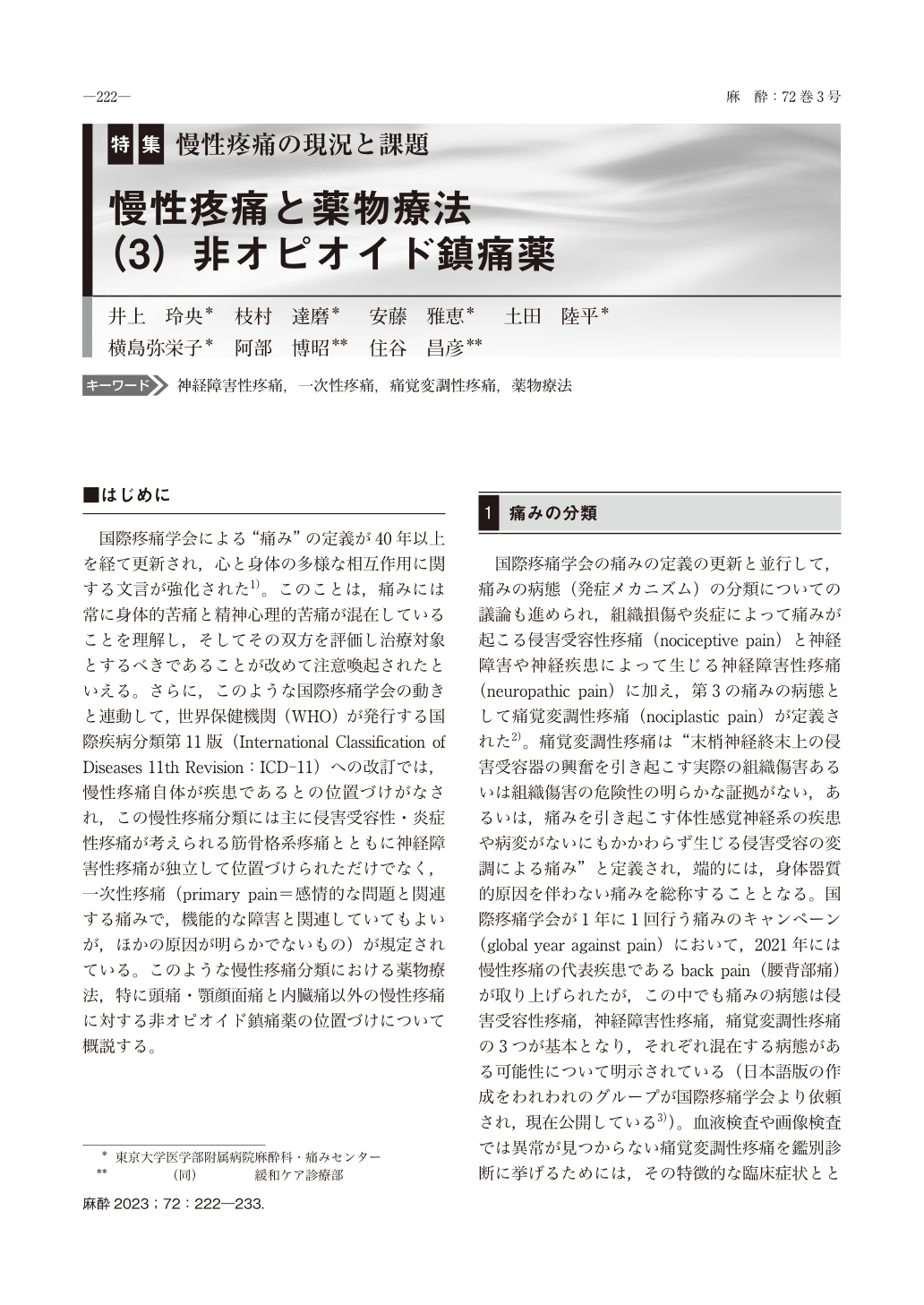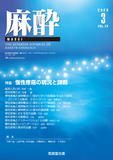Japanese
English
- 有料閲覧
- Abstract 文献概要
- 1ページ目 Look Inside
- 参考文献 Reference
はじめに
国際疼痛学会による “痛み” の定義が40年以上を経て更新され,心と身体の多様な相互作用に関する文言が強化された1)。このことは,痛みには常に身体的苦痛と精神心理的苦痛が混在していることを理解し,そしてその双方を評価し治療対象とするべきであることが改めて注意喚起されたといえる。さらに,このような国際疼痛学会の動きと連動して,世界保健機関(WHO)が発行する国際疾病分類第11版(International Classification of Diseases 11th Revision:ICD-11)への改訂では,慢性疼痛自体が疾患であるとの位置づけがなされ,この慢性疼痛分類には主に侵害受容性・炎症性疼痛が考えられる筋骨格系疼痛とともに神経障害性疼痛が独立して位置づけられただけでなく,一次性疼痛(primary pain=感情的な問題と関連する痛みで,機能的な障害と関連していてもよいが,ほかの原因が明らかでないもの)が規定されている。このような慢性疼痛分類における薬物療法,特に頭痛・顎顔面痛と内臓痛以外の慢性疼痛に対する非オピオイド鎮痛薬の位置づけについて概説する。
Chronic pain has a substantial effect on health-related quality of life(QOL). The International Association for the Study of Pain updated the definition of pain, and newly suggested “nociplastic pain” as the third pathophysiological mechanism of pain in addition to nociceptive pain and neuropathic pain. Concurrently, the World Health Organization(WHO)has newly established chronic pain as one of the disease entities in the International Classification of Diseases 11th version. In the ICD-11, the WHO defined “primary pain” as one sub-division of chronic pain, which indicates pain associated with significant emotional distress without any specific physical lesions. Several kinds of evidence-based recommendations are made for nociceptive/inflammatory musculeskeletal pain and neuropathic pain with specific etiologies. However, there are almost no evidence based pharmacotherapy for nociplastic pain and primary pain. To our knowledge, we identify only one guideline for chronic primary pain from Britain. In this guideline, among some pharmacotherapies, anti-depressants are weakly proposed and gabapentinoids are suggested as one candidate, although the guideline clearly demonstrates there are insufficient evidence for these medicines. This guideline critically restricts indication of either opioids and benzoziazepines for primary pain.

Copyright © 2023 KOKUSEIDO CO., LTD. All Rights Reserved.


